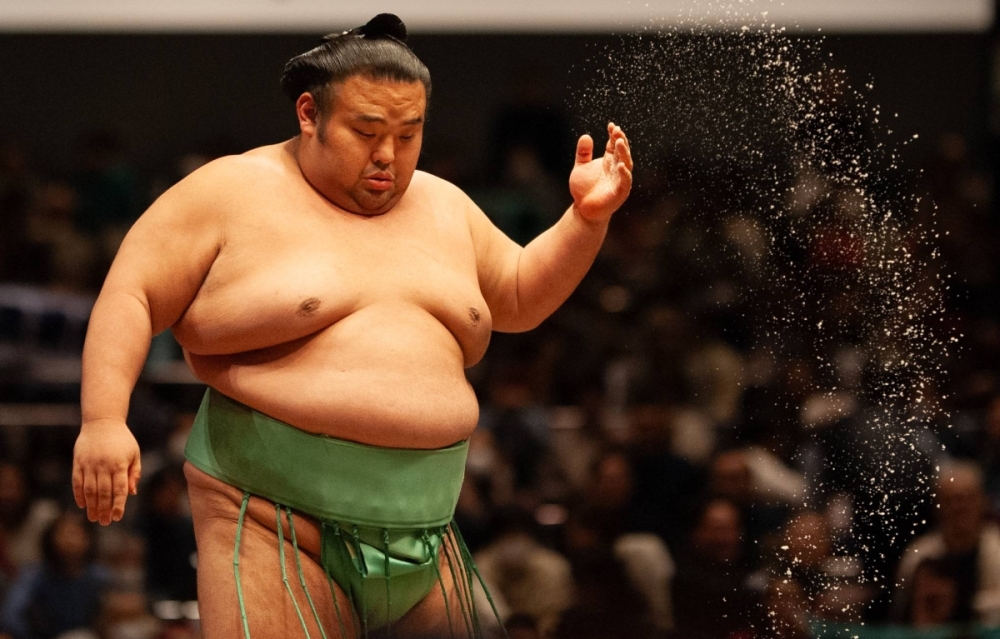Onosato wins his second championship. Ozeki on the horizon?
As Onosato dominates the spotlight, former sumo stars exit the stage

Onosato’s promotion to ozeki was confirmed Wednesday morning as sumo’s newest superstar continues to reap the rewards of yet another incredible tournament.
With the 24-year-old’s meteoric rise progressing unabated, Onosato figures to dominate headlines inside and outside the ring for the foreseeable future.
But while the two-time Emperor’s Cup winner may be the main story in Japan’s national sport right now, he is far from the only one.
As Onosato increasingly hogs the spotlight, a number of significant former luminaries have called time on their careers over the past week or so.
Just 12 months ago, Takakeisho claimed his fourth top-division title — the second most for anyone ranked at ozeki in modern sumo history — but lingering injury issues forced the burly pusher-thruster to hang up his mawashi shortly after his 28th birthday.
Takakeisho’s top division career may have lasted just 6½ years, but the Hyogo Prefecture native was must-watch TV for virtually all of that span.
With explosive power out of the initial charge, but limited abilities in defense — particularly on the mawashi — few of Takakeisho’s bouts became long, drawn out stalemates. The ozeki had to win quickly or risk finding himself in a difficult position.
That led to fast starts and dramatic finishes, with Takakeisho’s matchups thrilling audiences no matter the outcome.
In addition to routinely producing exciting sumo, the fact that Takakeisho won as much as he did in so few basho — and with a body atypical of elite modern wrestlers — deserves special mention.

Newly minted ozeki Onosato holds up two fish during his promotion ceremony in Ami, Ibaraki Prefecture, on Wednesday. | Jiji
Kaio, with five Emperor’s Cups, is the only ozeki to have lifted more silverware than Takakeisho and that was over a career twice as long.
If not for injury at inopportune moments, Takakeisho may have gone even further.
The white rope of a yokozuna was within touching distance on more than one occasion.
Had Takakeisho not lost a title playoff to Abi in November 2022, it’s conceivable that he would have been promoted following his victory in the next meet.
Given how things transpired after that (with just one more championship and six withdrawals in 10 tournaments), it’s arguable Takakeisho’s legacy actually benefits from missing out.
While there is no denying being part of sumo’s most exclusive club is an unparalleled honor, Takakeisho retires as one of the best ozeki in history rather than a short-term yokozuna who underperformed at the rank.
Of course that’s taking the finding of silver linings to the nth degree and there is no question that, given a choice, Takakeisho would rather have reached the rank of yokozuna.
Though not nearly as successful as Takakeisho, Aoiyama’s retirement following the September meet is also significant as it brings an end, at least for now, to Bulgaria’s two-decade presence in professional sumo.
The massive European spent the vast majority of his 15 years in о̄zumo as a rank-and-filer in the top division, with just five of 71 makuuchi division tournaments at the ranks of komusubi or sekiwake.
For the early part of his career, Aoiyama was completely in the shadow of fellow Bulgarian Kotooshu, with the latter man’s good looks and fast rise to ozeki grabbing the attention of advertisers and television producers alike.
After the death of his first stablemaster, and the closing of Taganoura stable, Aoiyama moved to Kasugano stable, where future ozeki Tochinoshin and sanyaku regular Tochiozan were the main stars.
Though he had the occasional standout tournament, and even managed a couple of runner-up performances, Aoiyama was, for most of his time in professional sumo, a steady but unspectacular presence. Many observers felt that he gained too much weight and lost the mobility needed to counteract faster, smaller opponents.

Takakeisho (left) and his stablemaster, Tokiwayama, after his retirement news conference in Tokyo on Saturday. | Jiji
Even so, the Bulgarian veteran, along with other wrestlers from Bulgaria, Hungary, the Czech Republic, Estonia and Georgia, gave Japan’s national sport a distinct European flavor in the first couple of decades of the 21st century, which contributed to sumo garnering a lot of attention in new markets abroad.
After sitting out the entirety of the September meet, veteran Myogiryu also decided to call time on his professional sumo career.
The highly touted former amateur almost certainly would have had a far more successful career had he not suffered a devastating knee injury in his jūryōdebut.
Though he recovered from that setback and eventually reached sumo’s third highest rank (sekiwake) while picking up several special prizes and gold stars, Myogiryu lost the otherworldly lower body flexibly he had displayed prior to the injury. With an unparalleled ability to bend when on the defensive, there is little doubt Myogiryu would have risen much faster much further had he not been injured.
Of course that’s a story not exclusive to the Nippon Sport Science University grad. Sumo is littered with tales of men whose dreams of reaching yokozuna or ozeki were shattered by knee injuries.
Recent retirees Takakeisho, Aoiyama and Myogiryu may have had very different career paths, but a sense of “what might have been” links all three.
More elevated career-high ranks, and a bigger collection of trophies, was certainly possible, but even so there shouldn’t be too many regrets as the trio all had successful careers in one of the world’s toughest sports.
Onosato and other young guns will dominate the news cycle moving forward, but it’s worth taking a moment to reflect on the careers of those who went before them and thank Takakeisho, Aoiyama and Myogiryu for their service to sumo.
Myogiryu



Sem comentários:
Enviar um comentário